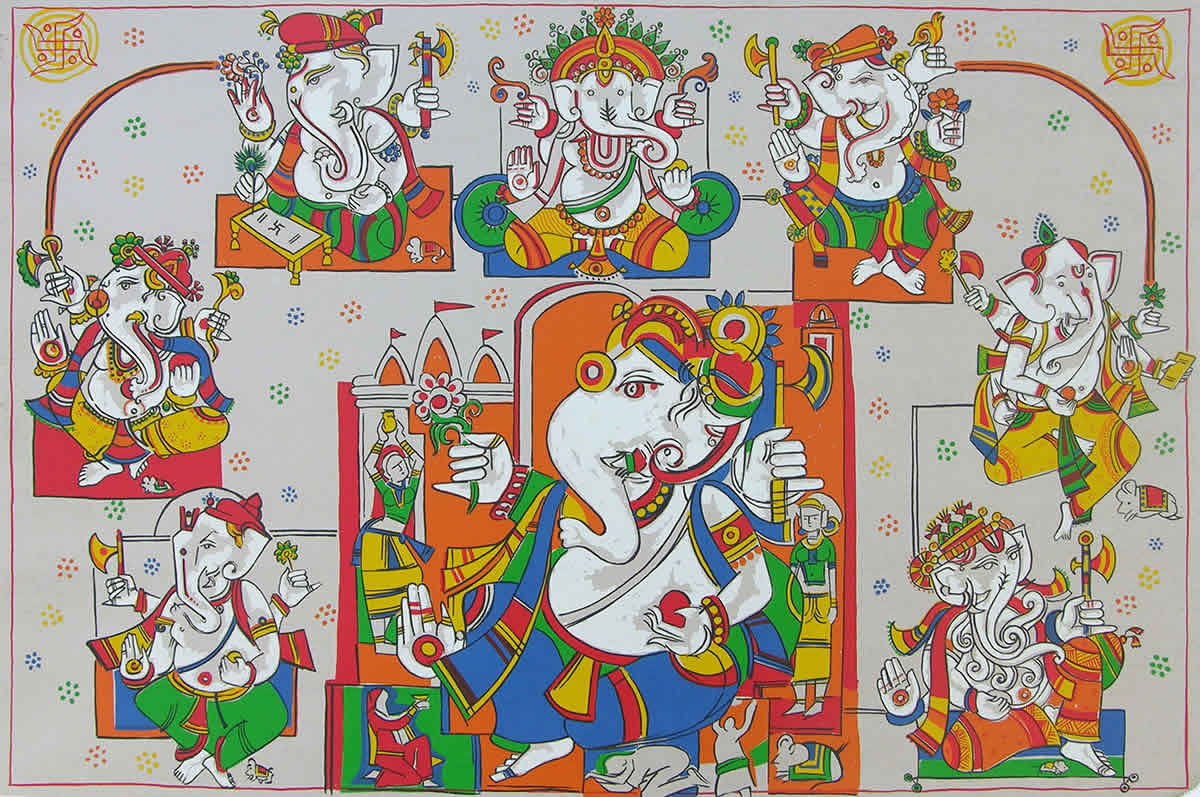
Astavinayak, Limited Edition Print by Artist Jagdeep Smart
Removal of obstacles
Ganesha is Vighneshvara, the Lord of Obstacles, both of a material and spiritual order. He is popularly worshipped as a remover of obstacles, though traditionally he also places obstacles in the path of those who need to be checked. Hence, he is often worshipped by the people before they begin anything new.
Buddhi (Intelligence)
Ganesha is considered to be the Lord of letters and learning. In Sanskrit, the word buddhi is a feminine noun that is variously translated as intelligence, wisdom, or intellect. The concept of buddhi is closely associated with the personality of Ganesha, especially in the Puranic period, when many stories stress his cleverness and love of intelligence. One of Ganesha's names in the Ganesha Purana and the Ganesha Sahasranama is Buddhipriya.
Om
Ganesha is identified with the Hindu mantra Om, also spelled Aum. The term oṃkārasvarūpa (Om is his form), when identified with Ganesha, refers to the notion that he personifies the primal sound. The Ganapati Atharvashirsa attests to this association. Chinmayananda translates the relevant passage as follows.
(O Lord Ganapati!) You are (the Trimurti) Brahma, Vishnu, and Mahesa. You are Indra. You are fire [Agni] and air [Vāyu]. You are the sun [Sūrya] and the moon [Chandrama]. You are Brahman. You are (the three worlds) Bhuloka [earth], Antariksha-loka [space], and Swargaloka [heaven]. You are Om. (That is to say, You are all this).
Ganesha Chaturthi
An annual festival honours Ganesha for ten days, starting on Ganesha Chaturthi, which typically falls in late August or early September. Ganesh festival begins with people bringing in clay idols of Ganesha, symbolising the god's visit. The festival culminates on the day of Ananta Chaturdashi, when the idols (murtis) are immersed in a body of water. Some families have a tradition of immersion on the 2nd, 3rd, 5th, or 7th day. In 1893, Lokmanya Tilak transformed this annual Ganesha festival from private family celebrations into a grand public event. He did so "to bridge the gap between the Brahmins and the non-Brahmins and find an appropriate context in which to build a new grassroots unity between them" in his nationalistic strivings against the British in Maharashtra. Because of Ganesha's wide appeal as "the god for Everyman", Tilak chose him as a rallying point for Indian protest against British rule. Tilak was the first to install large public images of Ganesha in pavilions, and he established the practice of submerging all the public images on the tenth day. Today, Hindus across India celebrate the Ganapati festival with great fervour, though it is most popular in the state of Maharashtra.
(source : Wikipedia)
Celebrate Ganesh festival with Ganesha festival